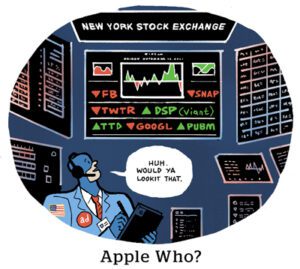Here’s today’s AdExchanger.com news round-up… Want it by email? Sign up here.
Programmatic Plays Nice
Yahoo may have earned itself a stay of execution in its ongoing dispute with The Trade Desk.
On June 17, The Trade Desk began limiting buyer access to Yahoo’s video ad inventory, claiming the publisher was incorrectly labeling “outstream” as the far more desirable ”instream.”
Furthermore, The Trade Desk threatened to disable access entirely if Yahoo didn’t get its act together by July 1.
According to Digiday’s sources, however, as of July 2, media buyers can still purchase Yahoo inventory via first- and third-party private marketplaces. This implies (but doesn’t confirm) that The Trade Desk and Yahoo reached some kind of agreement before the deadline.
Also, don’t forget that, despite all the weight it throws around, The Trade Desk is just pipes. If an advertiser wants to buy a particular inventory from a particular publisher and has a PMP set up to do so, The Trade Desk will do what it’s told by the brand.
But deal or no deal, Yahoo’s not out of the woods. Given that there likely wasn’t time for a full audit, the company may still have cleanup to do – if not of its inventory, then certainly of its reputation.
Demo Delirium
TV buyers are clinging to Nielsen for yet another upfront season.
Why are advertisers so reluctant to wean themselves off of Nielsen panel ratings?
Some buyers use alt currencies for advanced audience buys to go beyond age and gender, which is a natural fit for streaming ad targeting. But upfront negotiations primarily center on linear programming slated for this broadcast year, so buyers are sticking to the demos they’ve used for decades to measure national TV, Ad Age reports.
To win over buyers, new currencies must prove that their data works for both linear and streaming. Ad currencies use demo data in aggregate form (which is where TV ratings come from), but aggregate data doesn’t help buyers compare viewership for campaigns running on both linear and streaming.
Buyers often point out that, although new video ad rating solutions are getting MRC accreditation and certification from the broadcaster-backed joint industry committee, no single currency holds a stamp of approval for cross-platform demos.
Guess it’ll still be quite some time before alt currencies win mass adoption.
Tik, Tik … Boom!
TikTok’s days in US app stores aren’t officially numbered, but the threat of a ban with a real deadline has already impacted the platform’s performance.
Since 2022, daily time spent on TikTok has declined slightly, and user growth has stalled in the 18 to 24 age range. Although, to be fair, time spent in the 35- to 44-year-old range is still rising – enough so that, as of January, the average TikTok user is now over 30.
Ad spending, however, has slowed in the months since the potential ban’s announcement – from being up 19% year-over-year in March to up just 11% YOY in April and 6% YOY in May.
As Adweek notes, many advertisers claim they’re merely shifting to a “performance-centric mindset,” which Meta excels at more so than TikTok.
But for brand awareness and other upper-funnel goals, brands aren’t giving up on TikTok yet. In fact, where CPMs are concerned, TikTok’s metrics actually increased compared to other channels, with a 19% YOY increase from 2023 to 2024.
“It’s been more resilient than you’d think,” says one agency source.
But Wait, There’s More!
Seems like Google’s cookie-replacement plans are catching flak from all sides. [Business Insider]
First the EU and now Brazil want Meta to stop using the personal data of its citizens for AI training. [The Verge]
Seedtag acquires Australian marketing intelligence company JustEggs Digital. [B&T]
Was this year’s Cannes fest a Man-fest? [Adweek]















